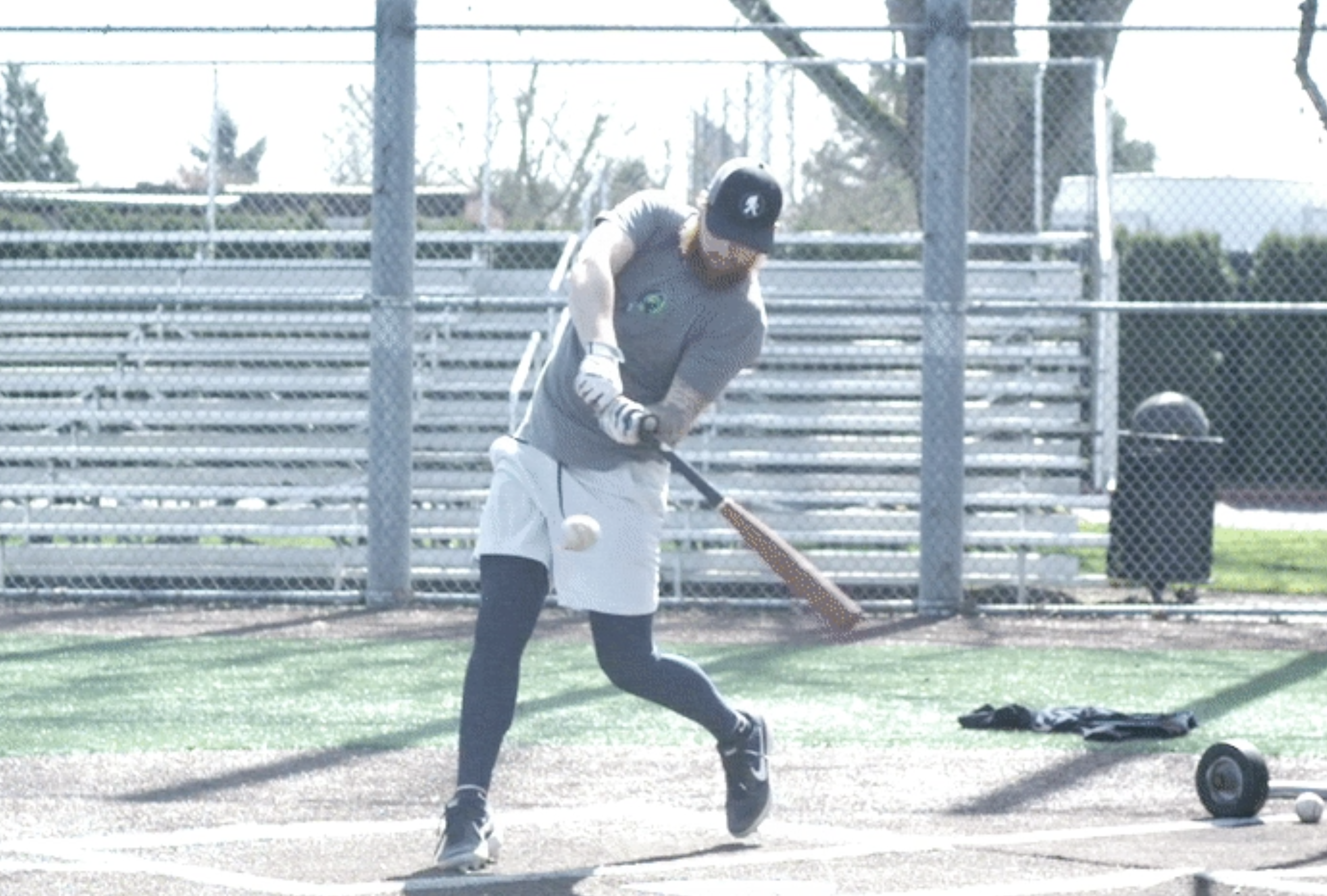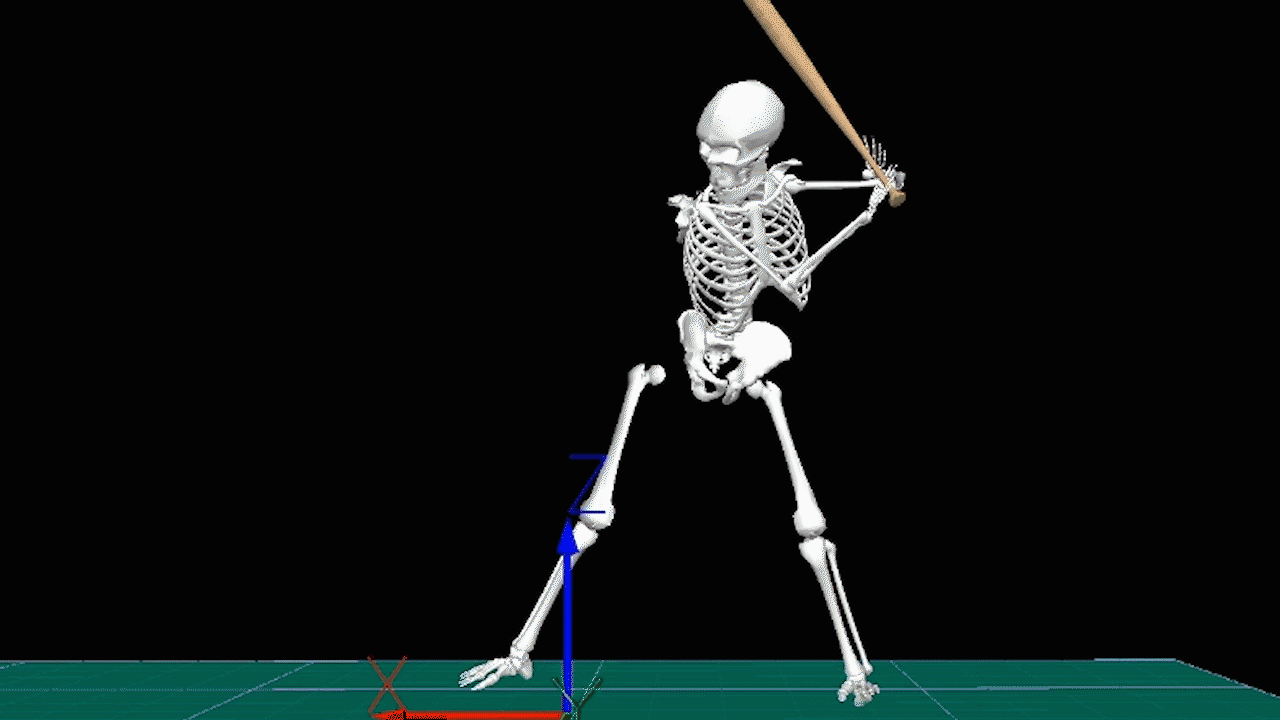Case Study: A Pro Player’s Transition to Catcher

There are not many athletes who choose to take on the challenges of catching post college – especially after a successful college career. But that’s exactly what Jacob Bockelie did.
Bockelie graduated from Pacific Lutheran University, where he earned the Northwest Conference Player of the Year honor, was selected to D3baseball.com’s first team, and was named to ABCA’s Rawlings All-Region second team. He had played just four games behind the dish at PLU and those were all in 2017.
However, after looking at the landscape of professional baseball, how first baseman and corner outfielders profile offensively (Catchers: 85 wRC+ .712 OPS, First Basemen: 105 wRC+, .789 OPS), and the value he could bring as a left-handed hitting catcher with pop, Jacob decided to make the switch.
While the position wasn’t completely new to him, there were concepts around catcher receiving being taught on the training floor at Driveline that were. So, that’s where we started. We showed Jacob how the best catchers in the game receive pitches in every location. While gaining an understanding for how things should look, Jacob went to work catching up on what he needed most – reps.

Become the Hitter You Want To Be
Train at Driveline
Jacob caught as many bullpens as possible while receiving bi-weekly breakdowns of footage, which allowed us to identify the main areas in which Jacob could most improve. We addressed these areas with specific drill work and block training off a machine and tested the newly developed patterns in live situations with a pitcher.
Here is one of Jacob’s first bullpens:
During the bullpen breakdown sessions, we were able to identify some specific areas that needed improvement. The main ones were:
- Downward movement with the torso and head to the low pitch – this is mostly due to the negative attack angle of the glove towards the pitch. In the GIF above, you can see how the glove starts above the ball and works down to it, making framing anything back to the zone nearly impossible.
- Glove/Body orientation turning to the outside pitch causing the glove to be jarred by this pitch – when you frame the outside pitch, it should be framed towards the zone, rather than towards your own setup. We were seeing Jacob’s shoulders get turned towards first base by the outside pitch and the frame being pulled into the body, rather than back to the strike zone.
- Glove roll – this is when you roll the glove forward, essentially showing the back of your hand/glove during the catch. Turning the glove over and down presents more glove below the ball, which can make a pitch look even lower.
Catching Drills and Training
Downward Action
These issues were first addressed in Plyo Ball ® work. We started with the downward action of the glove and the body. Conceptually, we want the glove to start below the low pitch and work up through the catch. We worked on this through barehanded Plyo Ball ® work. As you go heavier in weight with the Plyo Ball ®, they become harder to manipulate. Any downward attack to the pitch with the hand or glove will be exposed and more apparent.
Here you can see Jacob working with the lighter gray Plyo Ball ® and drilling smooth upward action through the catch. Progressing from the heavier to lighter Plyo Ball ® was part of Jacob’s daily work.
Machine Receiving
We took the same approach to machine receiving. Big 12-6 type breaking balls are a great place to start when working on this type of action with the glove. They give the athlete a bit more time to read the pitch but have a steeper descent angle requiring the approach of the glove to come from below. Otherwise, you will have a bounce upon receipt. Here you see Jacob drilling that upward action and doing so out of different stances.
Since these positions were brand new, it was important for us to try out various stances early on. We made sure to have him switch it up after every couple pitches.
Outside Pitch – Orientation and Jarring
The outside pitch is generally running away from the glove side and specifically tougher to get “around.” Getting around a pitch correctly is when the glove gets outside the pitch and starts working back towards the plate just before or at receipt.
A great way to work on this is by offsetting the machine or your throws to the glove side. This exaggerates the horizontal angle of the pitch, making it more difficult to redirect back to the zone. You can either toss from an angle or have the catcher face first base. We like to introduce this angle in barehand Plyo Ball ® work with the blue 450g Plyo Ball ®, which allows the athlete to be challenged on getting outside the pitch with an added weight.
We can progress this to weighted baseballs off a machine or live arm. Jacob got to know the 11 oz. ball pretty well as we worked on managing the impact of the ball as the glove moved away from the body to get outside the arm-side pitch. We saw some negative movement and jarring on the outside pitch during live ABs, which we sought to correct with weighted balls, angled approach, and sliders with excessive horizontal break.
Glove Roll
When catchers start trying to manipulate the low pitch, a common solution is to roll the glove forward. It’s a little bit of a cheat to bring the glove up without getting the thumb underneath the pitch. The problem is that almost all of the glove is now below the ball and that is what’s being presented.
Again, heavy Plyo Ball ® are a great way to start addressing this. Jacob caught heavy Plyo Ball ® barehanded and made sure his palm was facing the tosser, not the ground. When we moved to the machine, he cued trying to show the pitcher the ball in his glove.
Jacob has made incredible progress as a receiver. He soaked up as much information as he could and was always looking to catch bullpens and live ABs. Jacob’s growth is a testament to how he attacked his training. His ability to now catch from multiple positions allows him to be adaptable to game situations without sacrificing quality pitch framing. His glove path turned around 180 degrees, now working from the bottom up.
He also figured out how to block and throw from all of these positions as well. He plans to work mostly from first base this year in his first professional season, but Jacob added a ton of value by putting himself in a position to compete for a job behind the plate. We are looking forward to seeing what he does on the field this year.
“This is easily the most confident that I’ve been in my ability behind the plate.”
Jacob Bockelie

Foundations of Hitting
30 modules teaching you everything we know about hitting and hitting mechanics.
Train at Driveline
Ready to get to work? In-gym and remote options are both available.
- Athlete Questionnaire: Fill out with this link
- Email: [email protected]
- Phone: 425-523-4030
Written by Maxx Garrett – Catching Coordinator & Hitting Trainer
Comment section